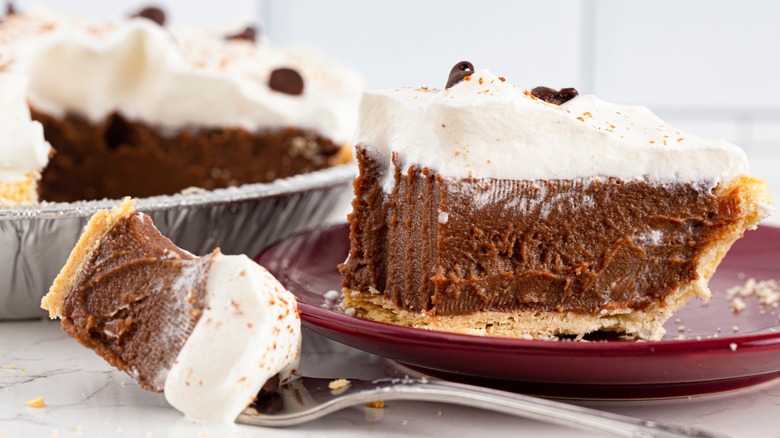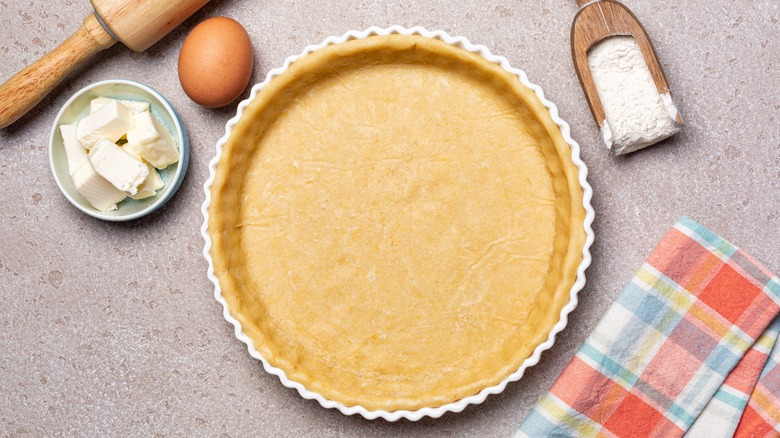The Sweet Layer You Need For Crispy, Not Soggy, Pie Crust
Pie may be one of the most perfect desserts that humanity has yet invented, but it's not always as easy as... well, you know. There's the crust, for one — an intimidating order for many home bakers, but completely doable once you get the hang of it (check out our tips for a perfect pie crust). Even once you've achieved a flaky pie crust, though, you want to make sure it stays that way — especially on the bottom, where it inevitably comes into contact with a wet filling, whether you're working with blueberry, pumpkin, or chocolate cream. The soggy-bottom pie has bedeviled many a baker. But this, too, is manageable. I used to work in a pie shop and, depending on what the flavor was, we had a handful of clever fixes to keep the bottom crust dry.
Take that chocolate cream pie, for example. At the pie shop, we would blink-bake the crusts for cream pies, since they wouldn't be baked again once they'd been filled. As soon as the hot, fully-baked crusts came out of the oven, we'd sprinkle a little chopped-up dark chocolate into them. Then, after a few seconds, we'd use pastry brushes to spread the melting chocolate around the entire bottom of the crust. The chocolate hardened as it cooled, meaning that, by the time the filling was added, it had turned into a nigh-impenetrable barrier protecting that crust — not to mention a delicious one. There are plenty of pie recipes out there, but don't worry there's a trick for each of them.
How to keep the bottom crust dry on any kind of pie
A little extra chocolate never hurt a chocolate cream pie, but you may find yourself in a situation when you don't want that note — like with coconut or banana cream pie. A couple options: One is white chocolate, brushed on in the manner described above but less noticeable in flavor and color. Don't want to add any flavor? Whisk an egg white, then brush it onto the hot crust after you take it out of the oven. The residual heat will cook the egg, helping create a moisture-resistant barrier. If it still looks a little wet, just pop the crust back in the oven for a few seconds.
What, though, of fruit pies — where dough and filling all cook together? Right before you assemble the pie, sprinkle a half-and-half mixture of flour and sugar onto the bottom of the shell. This "crust dust," as bakers call it, will soak up moisture and form another kind of barrier between the filling and the shell. And then, of course, it's always a good idea to bake fruit pies on a hot sheet pan (or a pizza stone). Throw one in the oven as soon as you start preheating (for pies that might bubble over, do your future self the additional favor of lining the pan with foil for easy cleanup). The warm metal ensures that the bottom of the pie will start baking as soon as it hits the oven. Pies are notorious for causing problems, but a soggy crust doesn't need to be one of them.

